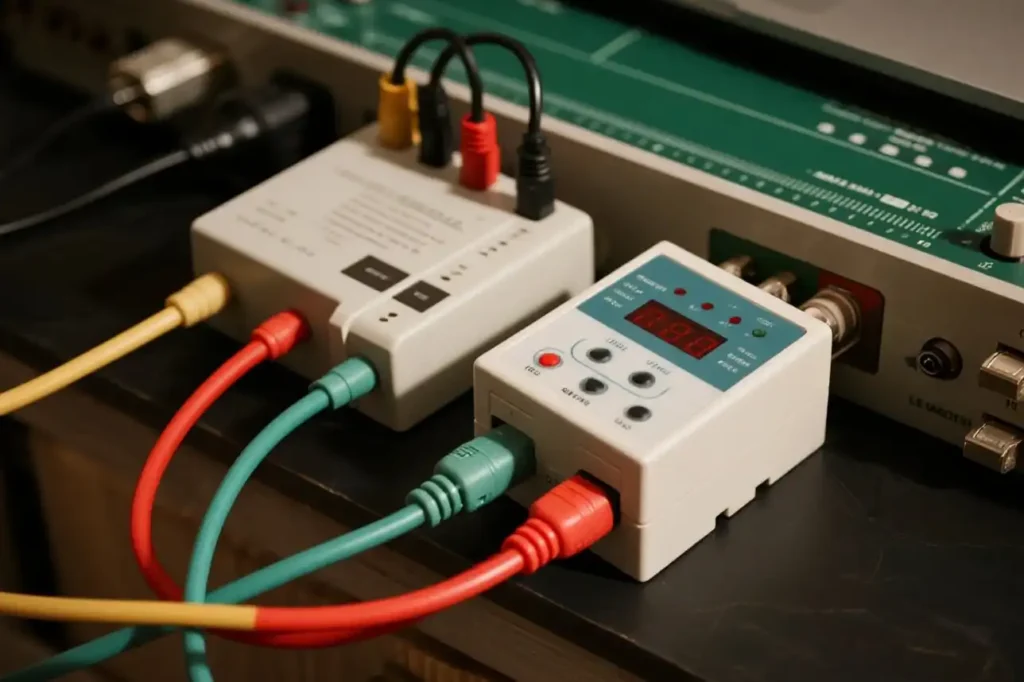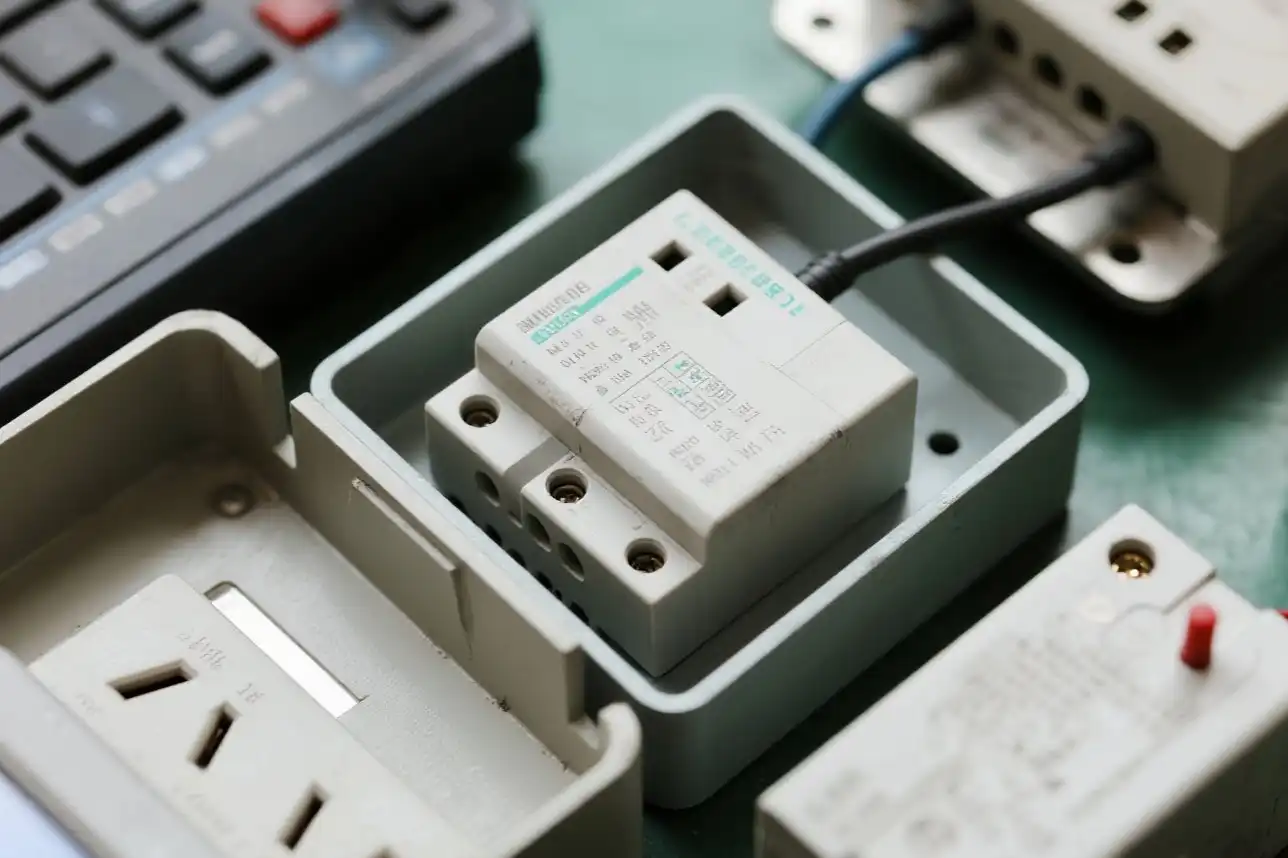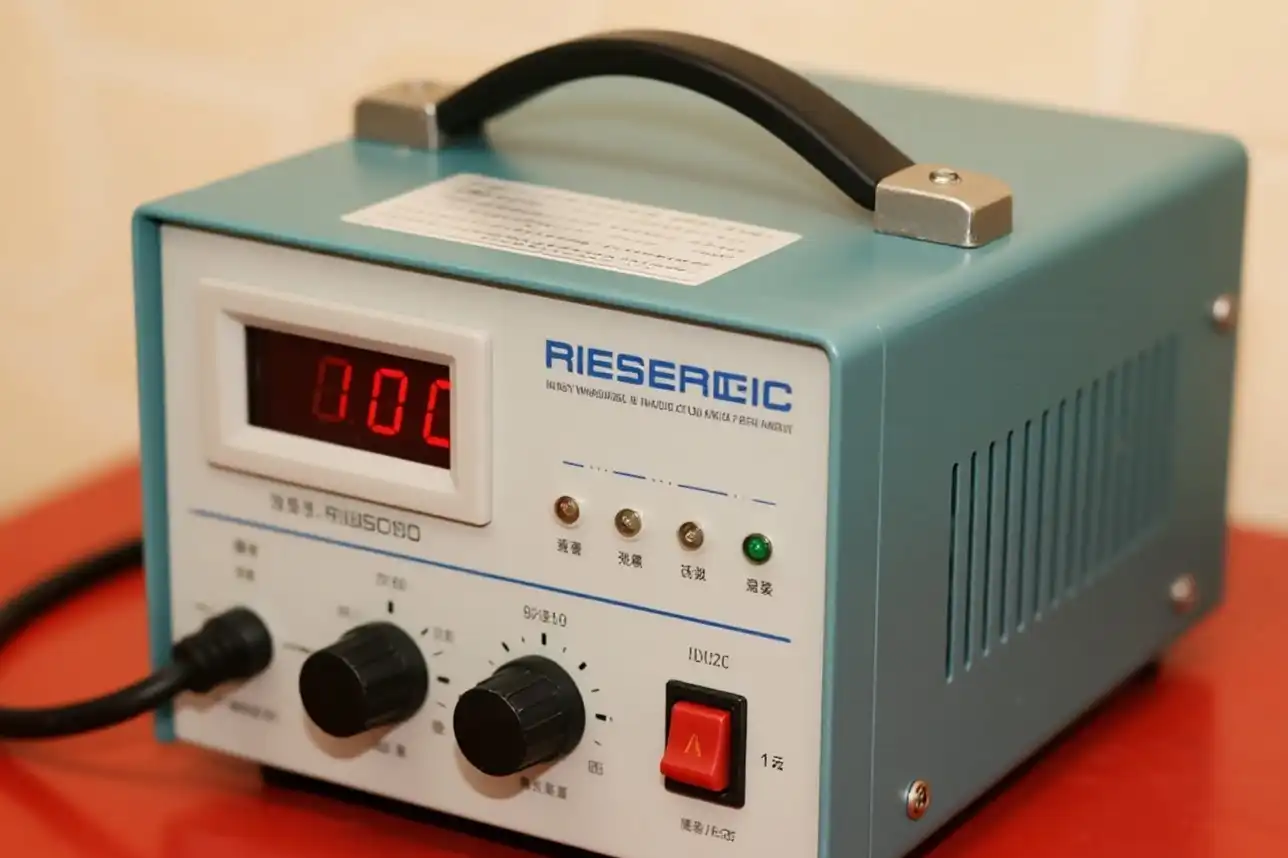You want your devices to stay safe from electrical problems, but picking a surge protector or a voltage stabilizer can be hard. Power surges and voltage changes happen a lot in homes and businesses. This is more true now because we use more electronics and smart devices. Studies show these problems are happening more because power systems are getting old and natural events are common. Surge Protector vs Voltage Stabilizer choices depend on if you need to stop sudden spikes or regular voltage changes.
Key Takeaways
- Surge protectors keep your devices safe from sudden voltage spikes. They move extra electricity away fast. This protects against lightning and power surges.
- Voltage stabilizers make sure the power stays steady. They change voltage levels when needed. This helps appliances work well. It also helps them last longer during voltage changes.
- Use surge protectors for sensitive electronics like computers and TVs. This is important in places with storms or power outages. Use voltage stabilizers for things that need steady power like refrigerators and air conditioners.
- Using both devices gives the best protection. They stop quick spikes and handle long-term voltage changes. This lowers damage and repair costs.
- Check and take care of your surge protector and voltage stabilizer often. This makes sure they work right and keep your devices safe.
Surge Protector
What It Does
A surge protector helps keep your electronics safe from sudden voltage spikes. When a surge happens, it moves the extra electricity away from your devices and sends it into the ground. Most surge protectors have a part called a metal oxide varistor (MOV). This part works like a smart guard:
- The MOV is placed between the power line and the ground.
- When the voltage is normal, it stops extra electricity from flowing.
- If the voltage gets too high, the MOV lets the extra current go to the ground.
- When the voltage goes back to normal, the MOV blocks the flow again.
Some surge protectors also have gas discharge arresters. These only work during very big surges, like lightning, and help move dangerous currents away from your devices. Many surge protectors have fuses that cut off power if the main protection does not work.
What It Protects Against
You can have many kinds of electrical surges at home or work. Surge protectors help protect against:
- Lightning strikes that send lots of volts through power lines ⚡
- Problems with the power grid, like faults or sudden changes
- Big appliances, like air conditioners or fridges, turning on and off
- Old or broken wiring that makes power unstable
- Power coming back after an outage
- Accidents, like downed power lines or bad repairs
Surge protectors act fast when these things happen. They take in and move the extra voltage away, so your computers, TVs, and other electronics stay safe.
When to Use
You should use a surge protector when you plug in valuable or sensitive electronics. This means computers, TVs, game consoles, and smart home devices. If you live where storms, old wiring, or power outages happen a lot, a surge protector is even more important. Experts say to use both whole-house surge protectors and smaller ones for each device. This way, your whole electrical system and your most important devices are protected from big and small surges.
Voltage Stabilizer
How It Works
A voltage stabilizer keeps the power to your devices steady. If the voltage goes too high or too low, the stabilizer notices the change. It then fixes the voltage so your appliances get the right power. This uses a feedback control system. The stabilizer checks the voltage and compares it to a set number. If the voltage is not right, the stabilizer changes it. This is like how a thermostat keeps a room at the right temperature.
You can see the main parts in the table below:
| Mechanism | Description |
|---|---|
| Feedback Loop | Watches the voltage and changes input to keep it steady. |
| Linear Regulators | Use a transistor to control voltage, simple but not very efficient. |
| Switching Regulators | Turn on and off fast for better efficiency, but can make some noise. |
| Automatic Voltage Regulators (AVRs) | Change voltage right away to stop damage. |
| AC/DC Stabilizers | Handle both kinds of current to protect devices from voltage swings. |
What It Protects Against
You can have many voltage problems at home or work. Voltage stabilizers keep your devices safe from these problems:
- Bad power from old or busy power grids
- Fast voltage drops or jumps when big machines turn on or off
- Broken wires or loose connections that make power go up or down
- Storms, lightning, or strong winds that mess up power lines
- Equipment that breaks and makes voltage unstable
- Long times of low voltage, called brownouts
Voltage stabilizers keep the voltage steady, even when these things happen. This keeps your devices safe and helps them work well.
Ideal Applications
You should use a voltage stabilizer with appliances that need steady power. These are:
- Refrigerators and deep freezers, which need steady voltage for their compressors
- Air conditioners, both inverter and non-inverter types
- Televisions, like LED, OLED, and plasma models
- Washing machines and dishwashers, which have sensitive motors and panels
- Geysers and water heaters, which can get too hot if voltage spikes
- Microwave ovens and other kitchen appliances
- Computers and home office gear, to stop data loss and hardware damage
Tip: If you live where voltage changes a lot or power is not steady, a voltage stabilizer can help you save money on repairs and make your appliances last longer.
Surge Protector vs Voltage Stabilizer
Key Differences
You might ask how a surge protector is different from a voltage stabilizer. Both help keep your electronics safe, but they do not work the same way. They also fix different problems. Look at this table to see the main ways they are not alike:
| Characteristic | Surge Protector | Voltage Stabilizer |
|---|---|---|
| Main Function | Protects equipment from sudden voltage surges or spikes | Regulates and stabilizes voltage over longer periods |
| Working Mechanism | Diverts excess voltage to ground wire quickly | Adjusts voltage output via boost or buck conversion mechanisms |
| Protected Area | Short-term, high magnitude voltage spikes (e.g., lightning) | Long-term voltage fluctuations in unstable power supply |
| Usage Environment | Installed at power supply of electrical equipment | Used in areas with frequent voltage fluctuations |
| Response Time | Very fast | Relatively slow |
A surge protector works like a shield. It blocks quick, strong bursts of electricity. You use it to stop damage from things like lightning or power surges. A voltage stabilizer is more like a manager. It keeps the voltage steady for a long time. You use it when your power goes up and down a lot.
Pros and Cons
When you look at Surge Protector vs Voltage Stabilizer, you see each one has good and bad points. Here is a table that shows the pros and cons:
| Feature/Aspect | Surge Protector | Voltage Stabilizer |
|---|---|---|
| Primary Function | Protects against sudden voltage spikes by diverting excess voltage away from devices. | Regulates and maintains a constant voltage level to protect against frequent voltage fluctuations (both high and low). |
| Working Principle | Uses components like Metal Oxide Varistors (MOVs) to clamp and absorb surges quickly. | Uses electromechanical transformer concepts and voltage regulators to adjust voltage within a range (±20%). |
| Advantages | Quick response time, high energy absorption, cost-effective, protects from sudden surges. | Extends equipment lifespan, saves energy (up to 40%), stabilizes voltage for reliable operation. |
| Disadvantages | Limited lifespan due to deterioration from repeated surges, mainly protects only against spikes. | More complex and expensive, requires professional installation, slower response time, less effective against sudden surges. |
| Typical Use Case | Ideal for protecting sensitive electronics from lightning strikes and power surges. | Best suited for areas with unstable or fluctuating power supply to maintain steady voltage. |
| Combined Use | Recommended to use both for comprehensive protection against surges and voltage fluctuations. | Recommended to use both for comprehensive protection against surges and voltage fluctuations. |
Note: Surge protectors should be checked often. They usually last five to eight years. You need to replace them every few years or after a big lightning strike. Voltage stabilizers do not have a set time to replace. They often need a professional to install them.
Which Is Better for You
Picking between a surge protector and a voltage stabilizer depends on what you need and how good your power is. Here are some tips to help you choose:
- If you live where storms or sudden surges happen a lot, get a surge protector. It acts fast and keeps your devices safe from sharp spikes.
- If your home or office has power that goes too high or too low, or if the power is not steady, use a voltage stabilizer. It keeps the voltage even and stops slow damage to your appliances.
- For things like computers and home entertainment systems, experts say to use both. Surge protectors stop quick spikes. Voltage stabilizers keep the voltage safe over time.
- Some new devices, like uninterruptible power supplies (UPS), have both surge protection and voltage regulation. These give the best safety for expensive equipment.
Tip: Many safety rules say you must use surge protectors in homes and businesses, especially where lightning or power problems happen a lot. Using both devices together gives you the best protection.
When you look at Surge Protector vs Voltage Stabilizer, remember each one fixes a different problem. Surge protectors stop fast, dangerous spikes. Voltage stabilizers handle changes that last longer. For the best results, pick what matches your power and the devices you want to keep safe.
Using Both Together
Combined Protection
You get the best safety for your electronics when you use both a surge protector and a voltage stabilizer. Each one helps with a different problem. The surge protector works quickly to stop sudden voltage spikes. The voltage stabilizer keeps the power level steady, so your devices always get the right amount of electricity.
Here are some main benefits when you use both devices:
- Surge protectors keep your electronics safe from sudden voltage spikes. These spikes can happen because of lightning, power outages, or problems with the power grid.
- Voltage stabilizers make sure your devices get steady voltage. They protect against too much or too little voltage and ongoing power changes.
- When you use both, you protect your devices from all kinds of electrical problems. Your electronics stay safe from quick spikes and slow voltage changes.
- This setup helps your electronics last longer. You avoid damage that can make your computers, TVs, and appliances break sooner.
- You feel calm knowing your devices work safely and reliably, even if the power is not perfect.
Tip: Many experts say to use both for important equipment like computers, home theaters, and medical devices. This lowers the chance of expensive repairs or losing data.
Setup Tips
You can set up both devices easily. First, plug the voltage stabilizer into the wall outlet. Next, connect your surge protector to the stabilizer. Then, plug your devices into the surge protector. This order gives your electronics the best protection.
Follow these tips for the best results:
- Pick a voltage stabilizer that matches the total wattage of your devices.
- Choose a surge protector with a high joule rating for better spike protection.
- Check both devices often. Replace the surge protector if it looks worn out or after a big surge.
- Keep the setup in a dry, cool place. Do not overload the outlets.
- Read the manuals for both devices. Follow all safety instructions.
Note: If you are not sure how to install, ask a licensed electrician for help. This makes sure your setup is safe and works the right way.
Choosing the Right Option
Device Sensitivity
Think about how sensitive your devices are before picking protection. Some electronics, like computers, smart TVs, and medical equipment, can break from small voltage changes. Simple things, like lamps or fans, are not as sensitive. Here are some things to help you choose:
- Voltage stabilizers keep voltage steady all the time. They are best for devices that need constant power, like lab equipment or hospital machines.
- Surge protectors work fast during sudden spikes, like lightning. They are important for computers, gaming consoles, and home theaters.
- If you use expensive electronics, look for surge protectors with high joule ratings and indicator lights. These features show if the device still works.
- For the best safety, you can use a device that has both protections, like a UPS with surge and voltage control.
Tip: Sensitive devices often need both types of protection. This helps stop both quick and slow damage.
Power Quality
Check the power quality in your area before you choose. This helps you pick the right device. Here is an easy way to check:
- Watch for flickering lights or appliances that act strange.
- Use a multimeter to check voltage at different times. If the voltage is not between 198V and 242V, your power is not steady.
- Look at your repair history. If you fix appliances a lot, bad power may be the reason.
If you see many voltage changes, a voltage stabilizer will help. If you live where storms or surges happen often, a surge protector is needed. Sometimes, you need both for full protection. The Surge Protector vs Voltage Stabilizer choice depends on your local power problems.
Budget Factors
You want to keep your devices safe without spending too much. Surge protectors cost less and are simple to use. Voltage stabilizers cost more and may need a pro to install. Still, both can save you money by stopping repairs or replacements.
“A surge can cause small or big problems. It depends on how long and strong the surge is, and if your devices have good protection. Small surges can slowly break your devices over months. Big surges can do the same damage in less than a millisecond.”
A table can help you compare:
| Option | Upfront Cost | Long-Term Savings | Best For |
|---|---|---|---|
| Surge Protector | Low | High | Sudden spikes, most homes |
| Voltage Stabilizer | Medium-High | High | Unstable voltage, sensitive gear |
| Both Combined | Higher | Highest | Full protection, critical devices |
Note: Spending a little more now can save you a lot later. Using both devices gives you the best value and peace of mind.
Choose ONESTOP surge protection device: With over 20 years of manufacturing experience, international certification assurance, and excellent quality, we help you comprehensively improve circuit safety protection.
You have learned how surge protectors and voltage stabilizers are different. Surge protectors work quickly to stop sudden spikes. Voltage stabilizers keep the voltage steady for devices that need it. For example, FedEx Express and T & T Shell Gas saved money and had less downtime by using surge protectors. Hospitals and factories use voltage stabilizers to keep their equipment safe and working well. When you look at Surge Protector vs Voltage Stabilizer, pick what matches your power needs. Using both gives your electronics the best protection.
FAQ
Can you plug a surge protector into a voltage stabilizer?
Yes, you can do this. First, plug the voltage stabilizer into the wall. Next, connect your surge protector to the stabilizer. This way, your devices get both surge and voltage protection.
Do all appliances need a voltage stabilizer?
No, not every appliance needs one. Use a voltage stabilizer for sensitive things like refrigerators, air conditioners, and computers. Simple items like lamps or fans usually do not need extra voltage protection.
How do you know if your surge protector still works?
Check for lights on your surge protector. If the light is off, you should replace it. Some surge protectors have a reset button. If it looks old or damaged, get a new one.
Can a voltage stabilizer protect against lightning?
A voltage stabilizer cannot stop lightning strikes. You need a surge protector for that job. Surge protectors act fast when lightning or power surges happen.
What is the lifespan of a voltage stabilizer?
Most voltage stabilizers last for many years if used right. Look at the manual for more details. If you hear odd sounds or your devices act strange, call a technician to check the stabilizer.
The following information may be of interest to you
How to Replace a Surge Protector Safely and Efficiently
Do you need a surge protector for your solar system
Panel Surge Protector Pros and Cons for Homeowners
What You Need to Know About Surge Protection Device Lifespan
How to Test Surge Protection Devices for Optimal Performance






